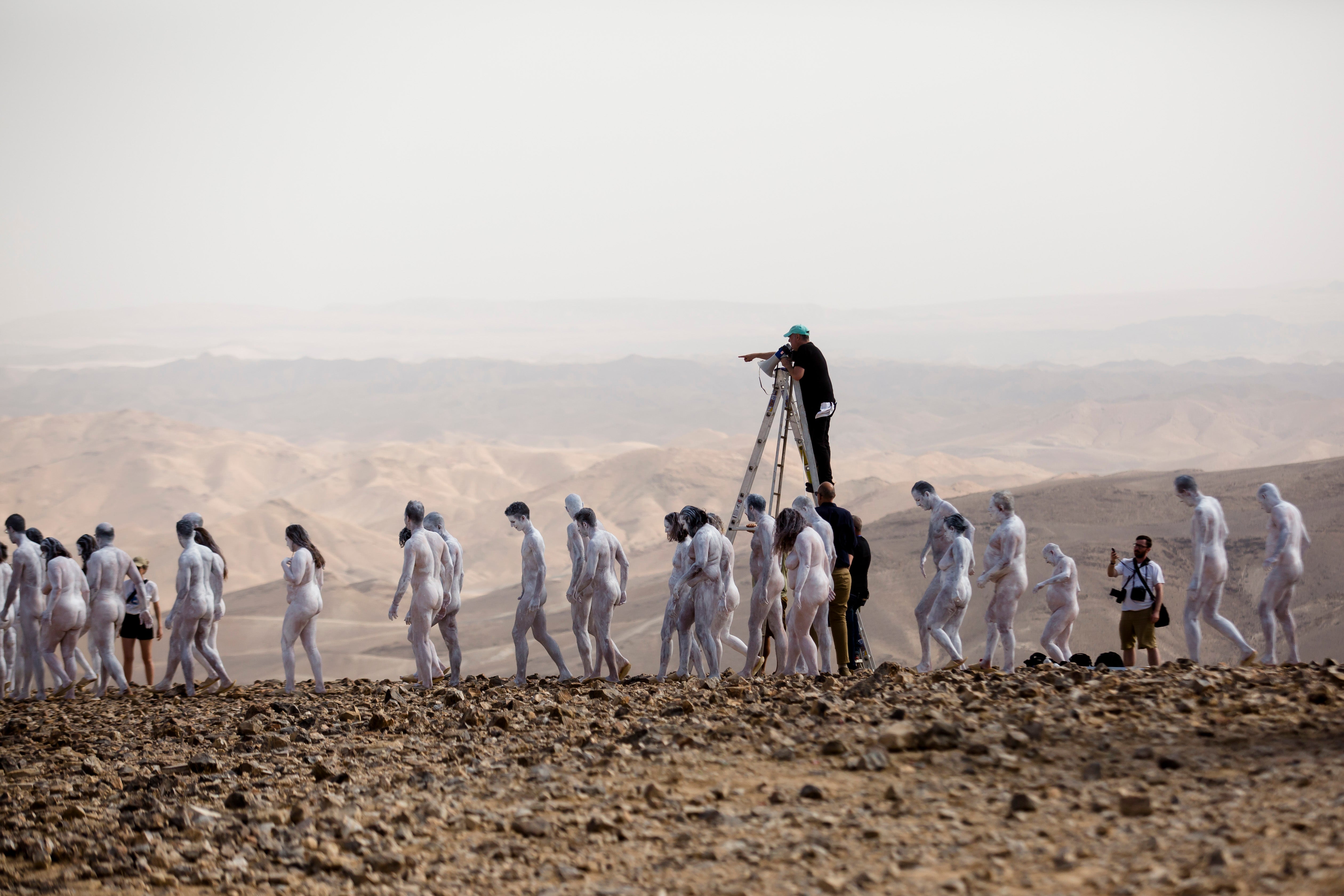Artist gets hundreds of models to pose naked next to Dead Sea, drawing attention to climate crisis
This was the photographer’s third installation in over a decade to bring attention to the drying Dead Sea

Over 200 people covered only in white body paint modelled for American artist Spencer Tunick across a desert in southern Israel to raise awareness for the deteriorating condition of the Dead Sea.
Volunteers, of ages between 18 and 70, lined up across the desert near the Dead Sea in rows of 10 on Sunday and awaited instructions from the artist, who was perched on a ladder with a megaphone and a camera.
The volunteers, both men and women, stood barefoot on brown hills overlooking the sea. Mr Tunick said he chose to cover the models in white paint to evoke the Biblical story of Lot’s wife, who allegedly turned into a pillar of salt.
The project was a part of an initiative to support the establishment of the planned Dead Sea Museum in Israel’s Arad city.
This was the 54-year-old photographer’s third nude art project on the shores of the world’s most saline water body. During his first project in 2011, he featured 1,200 people, while only 15 people modelled for him in 2016.
"People are afraid of naked people,” Mr Tunick told the Jerusalem Post newspaper during his visit to the city last week to speak about his new project. “I am hoping this project will represent the body as an agent of change that will bring attention to the environmental problems of the Dead Sea area,” he said.
The artist was a guest of the country’s tourism ministry and his expenses, including the artwork, was covered by the government.
Addressing the media prior to the shoot on Sunday, the artist said he was in Israel to bring attention to the virtual Dead Sea Museum that he hoped would become “a real museum in Arad one day”.
“The Dead Sea is a vital eighth wonder of the world,” he was quoted by Times of Israel newspaper as saying.
While the project was criticised by the country’s conservative leaders who demanded the government withdraw its sponsorship to the “event of mass abomination”, Arad mayor Nisan Ben Hamo said Mr Spencer’s presence itself was a “gift” for him.
The Dead Sea is located between Israel and Jordan. The sea has receded by around four feet every year, creating thousands of sinkholes. In the last three decades, the sea’s water level has depleted by almost 100 feet.
The Jordan river, its primary water source, has been diverted for agricultural and other uses by Israel, Jordan and Syria. Environmentalists in the early 2000s predicted that the Dead Sea will disappear by 2050 if its water level continues to drop.
For Mr Spencer’s first installation, his subjects -- covered with mud from the sea -- posed at the Mineral Beach, located in the northern part of the Dead Sea.
The increasing number of sinkholes in the water body became the subject for Mr Tunick’s second project in 2016.
Although there was a glimmer of hope to revive the dying sea with a $1.5-billion joint project with Palestinian authorities, Jordan this year cancelled it after a diplomatic row.
It was aimed at building a desalination facility in Jordan and to link the Red Sea and Dead Sea.
Join our commenting forum
Join thought-provoking conversations, follow other Independent readers and see their replies
Comments
Bookmark popover
Removed from bookmarks